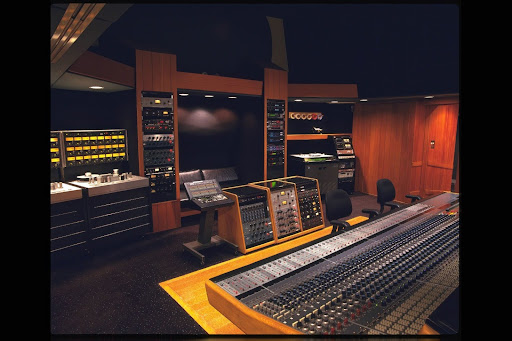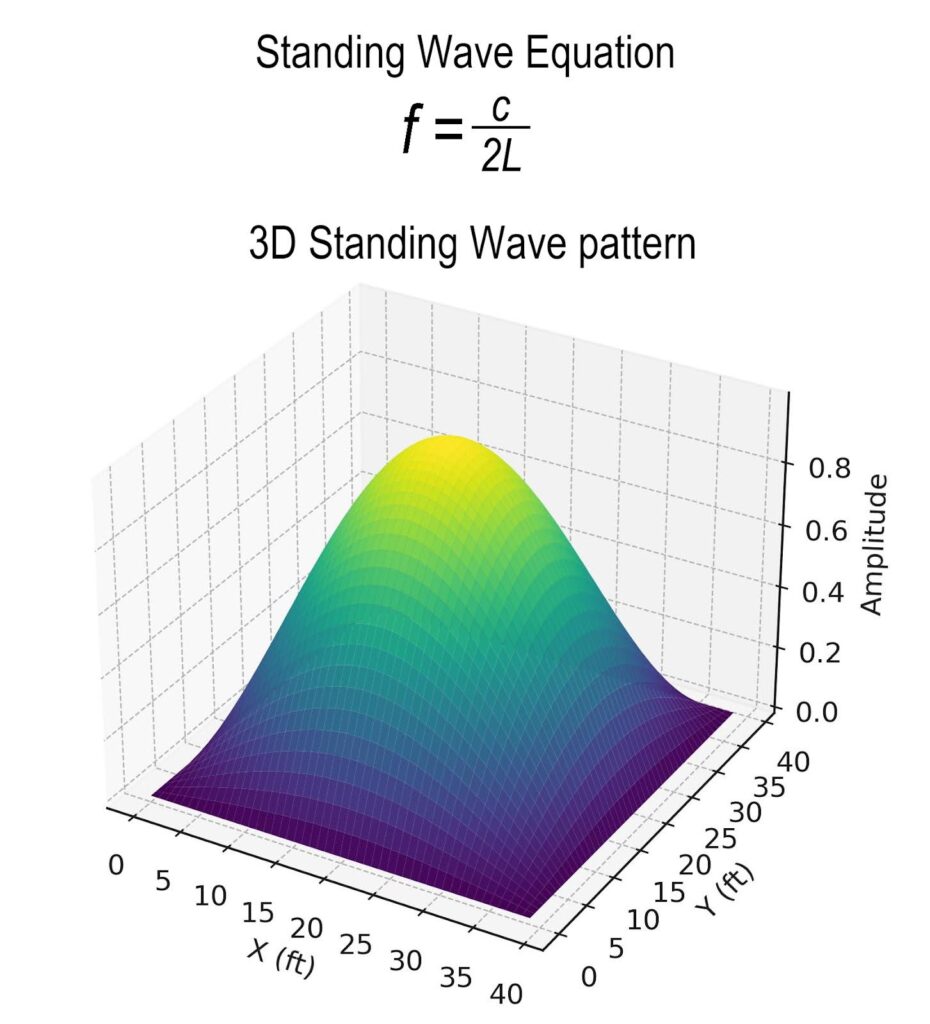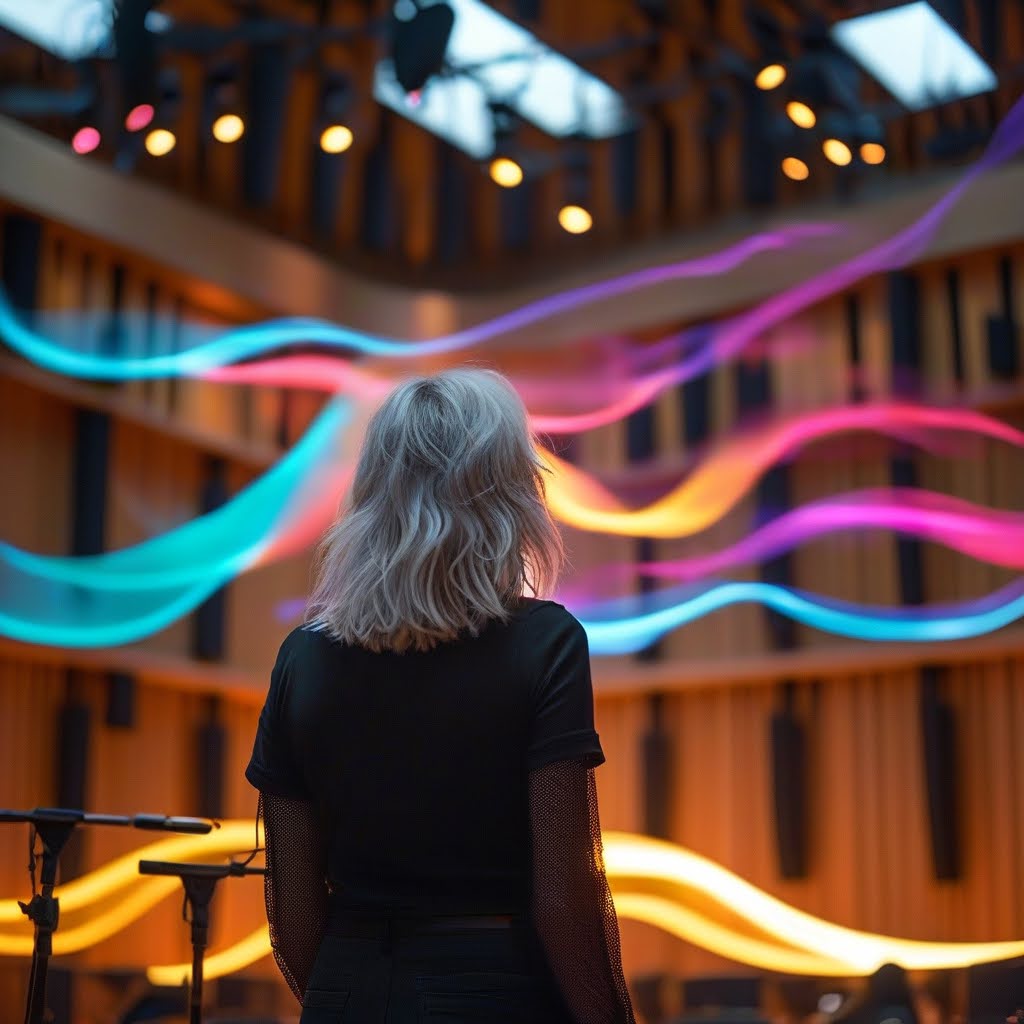By Gabrielle Birchak
I grew up as a stage actress and jazz vocalist. In 1984, in high school, I was singing in a nine-member jazz group that Downbeat Magazine awarded as the best high school jazz combo in the nation. So, music was part of my existence from an early age. But, thanks to my dad, so was math. Every morning, before heading off to work, he would leave me a little math puzzle to work on throughout the day. So, while I enjoyed math, I thought my life would be dedicated solely to acting and music.
By the time I reached my twenties, I realized that I needed a steady income. So, I immersed myself in the recording industry for a few years. One of my first jobs was working at A&M Recording Studios as a runner while studying to be an assistant engineer. My classroom was the studio, and my teacher was a brilliant technician, Mike Morongell, whom I shadowed almost every day. I enjoyed working in this environment, but I certainly did not expect to find love in the studio. That is until I had an encounter with math, which literally resided in the walls at A&M.

When I worked at A&M from the late 1980s to the 1990s, it consisted of three studios with large live rooms and two studios with small live rooms. My love story with math began the day I learned that everything in the studio affects the music recorded on the microphones in the live room. Everything comprises the walls, diffusers, absorbers, gobos, chairs, music stands, and isolation shields to separate sections in the room for different instruments.
During the process of recording music, the goal of the engineers and their trusty assistant is to ensure that the sound check goes smoothly, and sometimes, that includes proper setup in the live room. The setup involves identifying and controlling unwanted resonant frequencies, which can distort or even color the recordings. These unwanted frequencies can be created by unwanted standing waves. For a sound check, the objective is to create a space where the sound is accurate without excessive boom, dead spots, or frequency buildup.
Conveniently, I had been studying the standing wave equation while shadowing my mentor, but I had not yet experienced physically working with standing waves in a live room. So, when he suggested we test for standing waves, I realized that I was going beyond the calculation process to experiencing the swirl of audio within the live room.
In the Standing Wave Equation, f is the fundamental frequency of the mode in hertz (Hz), c is the speed of sound, which is 1,130 ft/sec, and L is the room dimension in feet.

However, it wasn’t until I stood in a live room that I realized I was learning math in motion. I didn’t need a math degree to recognize these strange sound patterns; I could hear them!
Imagine sound as a ripple in a pond. When a musician plays a note, those sound waves spread out, bouncing off the walls, ceiling, and floor, colliding and swirling like waves meeting in the ocean. Some waves crash together, growing louder and more intense, while others cancel each other out, leaving strange, hollow gaps where the sound should be. The movement of these waves is why, in some parts of a room, a bass note might boom like thunder, while just a few steps away, it fades into a whisper.
To find standing wave frequencies, I walked through the space with a microphone in hand while the engineer in the console room played deep, rumbling test tones through a speaker that sat in the live room. The sound swelled and disappeared as I moved, revealing the room’s hidden rhythm. By mapping out these invisible patterns, we could fine-tune the space. We added soft panels to tame the wild energy in the corners. These panels helped to scatter the sound so that it flowed smoothly rather than crash into itself. The goal wasn’t to silence the sound but to shape and guide it so that each microphone could capture every note as it was meant to be heard. At that moment, I realized that setting up a studio for a perfect recording wasn’t just about equipment in the live room but also about understanding how sound moves through space and how math factually defines it.

In retrospect, my journey through the recording industry was, in many ways, a direct study of applied mathematics long before I realized that math was also part of my existence and long before I formally earned my degree, sanctifying my love for math and validating my dad’s encouragement. My love story with math underscores a powerful truth: mathematics is not confined to textbooks or classrooms. It is woven into the very fabric of our experiences, shaping the way we interact with the world and the way we connect with music. Music and math are the same. It moves around us and permeates within us. No doubt, in the recording studio, math is not an abstract concept. Instead, math is a living, breathing force guiding us toward sonic excellence.
References
Cover Photo: A&M Live Studio A. Image Credit: Stephen Barncard
Author Photo: A&M Live Studio A and Console Room Studio A, permission to use by Stephen Barncard / Standing Wave Equation in 3D by Gabrielle Birchak / Colorful audio waves, AI Generated, by Gabrielle Birchak / Gabrielle Birchak profile photo

Gabrielle Birchak is an author and podcaster passionate about exploring the history of math and science. As the host of Math! Science! History!, she brings engaging storytelling and in-depth research to uncover fascinating connections between numbers, discoveries, and the people behind them.
